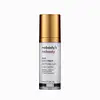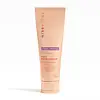What's inside
What's inside
 Key Ingredients
Key Ingredients

 Benefits
Benefits

 Concerns
Concerns

 Ingredients Side-by-side
Ingredients Side-by-side

Water
Skin ConditioningAloe Barbadensis Leaf Juice
Skin ConditioningCaprylic/Capric Triglyceride
MaskingDicaprylyl Carbonate
EmollientHyaluronic Acid
HumectantPropylene Glycol
HumectantGlycerin
HumectantXanthan Gum
EmulsifyingLecithin
EmollientC12-16 Alcohols
EmollientPalmitic Acid
EmollientCetearyl Alcohol
EmollientCetearyl Olivate
Sorbitan Olivate
EmulsifyingButyrospermum Parkii Butter
Skin ConditioningTheobroma Cacao Seed Butter
EmollientDimethicone
EmollientAllantoin
Skin ConditioningHexapeptide-8
Skin ConditioningBisabolol
MaskingTocopherol
AntioxidantCaviar Extract
Skin ConditioningPhenoxyethanol
PreservativeCaprylyl Glycol
EmollientParfum
MaskingLinalool
PerfumingWater, Aloe Barbadensis Leaf Juice, Caprylic/Capric Triglyceride, Dicaprylyl Carbonate, Hyaluronic Acid, Propylene Glycol, Glycerin, Xanthan Gum, Lecithin, C12-16 Alcohols, Palmitic Acid, Cetearyl Alcohol, Cetearyl Olivate, Sorbitan Olivate, Butyrospermum Parkii Butter, Theobroma Cacao Seed Butter, Dimethicone, Allantoin, Hexapeptide-8, Bisabolol, Tocopherol, Caviar Extract, Phenoxyethanol, Caprylyl Glycol, Parfum, Linalool
Aloe Barbadensis Leaf Juice
Skin ConditioningGlycerin
HumectantOenothera Biennis Oil
EmollientCetearyl Alcohol
EmollientGlyceryl Stearate Se
EmulsifyingSimmondsia Chinensis Seed Oil
EmollientRosa Rubiginosa Seed Oil
EmollientPrunus Amygdalus Dulcis Oil
Skin ConditioningMacropiper Excelsum Leaf Extract
Skin ConditioningSodium Stearoyl Glutamate
CleansingButyrospermum Parkii Butter
Skin ConditioningSclerocarya Birrea Seed Oil
HumectantZingiber Officinale Root Extract
MaskingSodium Hyaluronate
HumectantHelianthus Annuus Seed Oil
EmollientRosmarinus Officinalis Leaf Extract
AntimicrobialAvena Sativa Kernel Extract
AbrasiveTocopheryl Acetate
AntioxidantBenzyl Alcohol
PerfumingDehydroacetic Acid
PreservativeCitric Acid
BufferingParfum
MaskingCitral
PerfumingGeraniol
PerfumingLimonene
PerfumingLinalool
PerfumingAloe Barbadensis Leaf Juice, Glycerin, Oenothera Biennis Oil, Cetearyl Alcohol, Glyceryl Stearate Se, Simmondsia Chinensis Seed Oil, Rosa Rubiginosa Seed Oil, Prunus Amygdalus Dulcis Oil, Macropiper Excelsum Leaf Extract, Sodium Stearoyl Glutamate, Butyrospermum Parkii Butter, Sclerocarya Birrea Seed Oil, Zingiber Officinale Root Extract, Sodium Hyaluronate, Helianthus Annuus Seed Oil, Rosmarinus Officinalis Leaf Extract, Avena Sativa Kernel Extract, Tocopheryl Acetate, Benzyl Alcohol, Dehydroacetic Acid, Citric Acid, Parfum, Citral, Geraniol, Limonene, Linalool
Ingredients Explained
These ingredients are found in both products.
Ingredients higher up in an ingredient list are typically present in a larger amount.
Aloe Barbadensis Leaf Juice comes from leaves of the aloe plant. Aloe Barbadensis Leaf Juice is best known for helping to soothe sunburns. It is also anti-inflammatory, moisturizing, antiseptic, and can help heal wounds.
Aloe is packed with good stuff including Vitamins A, C, and E. These vitamins are antioxidants, which help fight free-radicals and the damage they may cause. Free-radicals are molecules that may damage your skin cells, such as pollution.
Aloe Barbadensis Leaf Juice also contains sugars. These sugars come in the form of monosaccharides and polysaccharides, folic acid, and choline. These sugars are able to help bind moisture to skin.
It also contains minerals such as calcium, 12 anthraquinones, fatty acids, amino acids, and Vitamin B12.
Learn more about Aloe Barbadensis Leaf JuiceThis ingredient is also known as shea butter. It is an effective skin hydrator and emollient.
Emollients help soothe and soften your skin. It does this by creating a protective film on your skin. This barrier helps trap moisture and keeps your skin hydrated. Emollients may be effective at treating dry or itchy skin.
Shea butter is rich in antioxidants. Antioxidants help fight free-radicals, or molecules that may harm the body. It is also full of fatty acids including stearic acid and linoleic acid. These acids help replenish the skin and keep skin moisturized.
While Shea Butter has an SPF rating of about 3-4, it is not a sunscreen replacement.
Shea butter may not be fungal acne safe. We recommend speaking with a professional if you have any concerns.
Learn more about Butyrospermum Parkii ButterCetearyl alcohol is a mixture of two fatty alcohols: cetyl alcohol and stearyl alcohol. It is mainly used as an emulsifier. Emulsifiers help prevent the separation of oils and products. Due to its composition, it can also be used to thicken a product or help create foam.
Cetearyl alcohol is an emollient. Emollients help soothe and hydrate the skin by trapping moisture.
Studies show Cetearyl alcohol is non-toxic and non-irritating. The FDA allows products labeled "alcohol-free" to have fatty alcohols.
This ingredient is usually derived from plant oils such as palm, vegetable, or coconut oils. There is debate on whether this ingredient will cause acne.
Due to the fatty acid base, this ingredient may not be Malassezia folliculitis safe.
Learn more about Cetearyl AlcoholGlycerin is already naturally found in your skin. It helps moisturize and protect your skin.
A study from 2016 found glycerin to be more effective as a humectant than AHAs and hyaluronic acid.
As a humectant, it helps the skin stay hydrated by pulling moisture to your skin. The low molecular weight of glycerin allows it to pull moisture into the deeper layers of your skin.
Hydrated skin improves your skin barrier; Your skin barrier helps protect against irritants and bacteria.
Glycerin has also been found to have antimicrobial and antiviral properties. Due to these properties, glycerin is often used in wound and burn treatments.
In cosmetics, glycerin is usually derived from plants such as soybean or palm. However, it can also be sourced from animals, such as tallow or animal fat.
This ingredient is organic, colorless, odorless, and non-toxic.
Glycerin is the name for this ingredient in American English. British English uses Glycerol/Glycerine.
Learn more about GlycerinLinalool is a fragrance and helps add scent to products. It's derived from common plants such as cinnamon, mint, citrus, and lavender.
Like Limonene, this ingredient oxidizes when exposed to air. Oxidized linalool can cause allergies and skin sensitivity.
This ingredient has a scent that is floral, spicy tropical, and citrus-like.
Learn more about LinaloolParfum is a catch-all term for an ingredient or more that is used to give a scent to products.
Also called "fragrance", this ingredient can be a blend of hundreds of chemicals or plant oils. This means every product with "fragrance" or "parfum" in the ingredients list is a different mixture.
For instance, Habanolide is a proprietary trade name for a specific aroma chemical. When used as a fragrance ingredient in cosmetics, most aroma chemicals fall under the broad labeling category of “FRAGRANCE” or “PARFUM” according to EU and US regulations.
The term 'parfum' or 'fragrance' is not regulated in many countries. In many cases, it is up to the brand to define this term.
For instance, many brands choose to label themselves as "fragrance-free" because they are not using synthetic fragrances. However, their products may still contain ingredients such as essential oils that are considered a fragrance by INCI standards.
One example is Calendula flower extract. Calendula is an essential oil that still imparts a scent or 'fragrance'.
Depending on the blend, the ingredients in the mixture can cause allergies and sensitivities on the skin. Some ingredients that are known EU allergens include linalool and citronellol.
Parfum can also be used to mask or cover an unpleasant scent.
The bottom line is: not all fragrances/parfum/ingredients are created equally. If you are worried about fragrances, we recommend taking a closer look at an ingredient. And of course, we always recommend speaking with a professional.
Learn more about Parfum